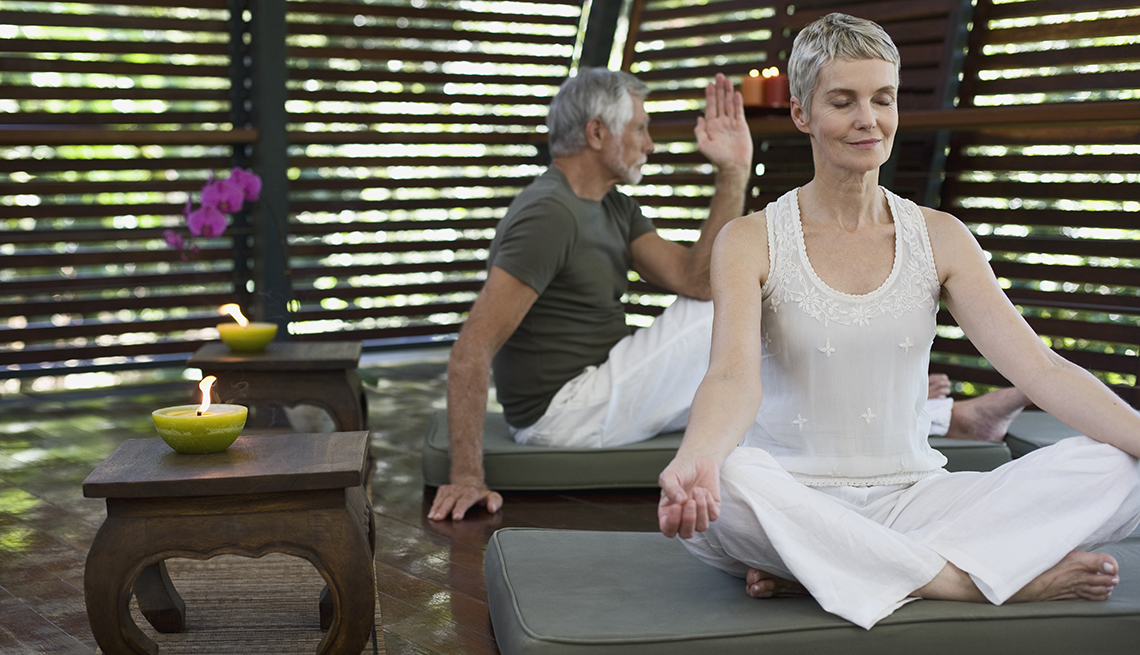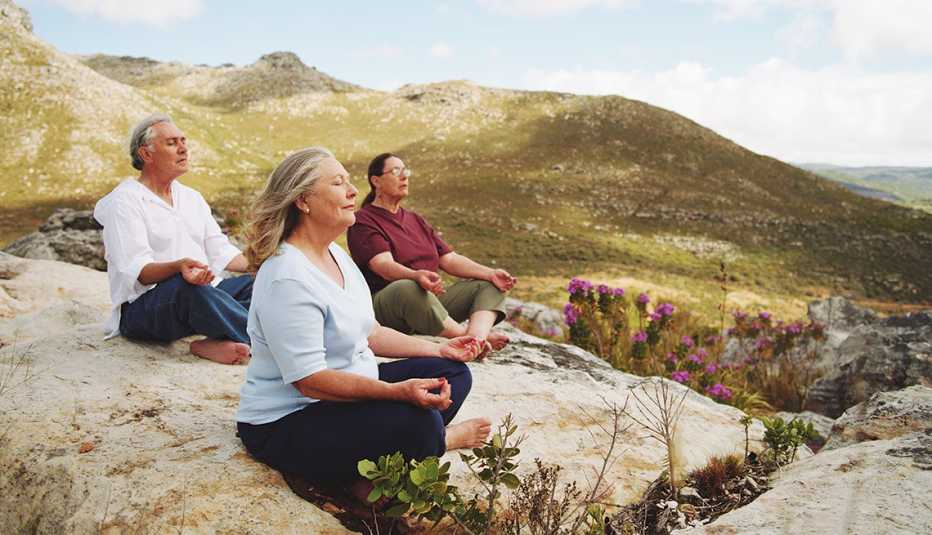Staying Fit
We have a kitchen where we eat and a bedroom where we sleep. If we want to cultivate calm and strengthen our meditation practice, it’s logical to create a dedicated space for it.
"There are so many obstacles involved with meditation, a dedicated space moves some of them out of the way,” says Ralph De La Rosa, author of the forthcoming book The Monkey Is the Messenger: Meditation and What Your Busy Mind Is Trying to Tell You. “We know when we engage with a habit with consistency, the brain gets the message and sinks into it more easily. If you sit down in the same place at or around the same time, your body and neural network will learn this is when we do that thing where we calm down for a while and go within."


AARP Membership— $12 for your first year when you sign up for Automatic Renewal
Get instant access to members-only products and hundreds of discounts, a free second membership, and a subscription to AARP the Magazine.
Your space doesn’t need to be a separate meditation room. A corner, alcove or even a closet can work. You could even create one in your backyard or garden.
“It’s ideal to have a space, but at the end of the day, what really matters is the metaphoric space — our attitude, our awareness, our sense of motivation,” De La Rosa says.
While there are no specific rules for creating a meditation space, these eight ideas offer inspiration.
1. Choose a space that feels good
You want the space to be serene and calm, rather than in the middle of a heavily trafficked area. “A meditation practice is very personal,” says Sharon Salzburg, author of Real Love: The Art of Mindful Connection. “You can do it anywhere — even the subway. But the meditation space you create at home is the most delightful of places.”
2. Keep the room clean and uncluttered
“Clutter around us will have us feeling more cluttered in our minds,” Salzburg says. Try to minimize distractions. Make sure your eyes can fall on a clean surface, not the newspaper, your phone or your computer.
3. Make it comfortable
“You don’t need to get into a pretzel-like pose,” Salzburg says. “Have some place you can sit comfortably. It can be a cushion, a chair or a couch. You can sit on a bed.”
If you’re sitting on the floor, use a cushion or blankets to prop your hips up higher than your knees. This will help take the pressure off the knees and open the hips. If you use a chair, make sure you have a proper backrest or cushion. Meditation should be comfortable.


































































